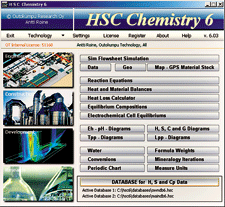Advertisement
Grab your lab coat. Let's get started
Welcome!
Welcome!
Create an account below to get 6 C&EN articles per month, receive newsletters and more - all free.
It seems this is your first time logging in online. Please enter the following information to continue.
As an ACS member you automatically get access to this site. All we need is few more details to create your reading experience.
Not you? Sign in with a different account.
Not you? Sign in with a different account.
ERROR 1
ERROR 1
ERROR 2
ERROR 2
ERROR 2
ERROR 2
ERROR 2
Password and Confirm password must match.
If you have an ACS member number, please enter it here so we can link this account to your membership. (optional)
ERROR 2
ACS values your privacy. By submitting your information, you are gaining access to C&EN and subscribing to our weekly newsletter. We use the information you provide to make your reading experience better, and we will never sell your data to third party members.
Physical Chemistry
Digital Briefs
New Software and Websites for the Chemical Enterprise
by Stephen M. Trzaska writes Digital Briefs. Information about new or revised electronic products can be sent to d-briefs@acs.org
January 1, 2007
| A version of this story appeared in
Volume 85, Issue 1
Online
(1) "Physical Chemistry of Polymers: Definitions and Concepts" is an interactive e-learning program available online as well as on CD. The program establishes a foundation for understanding the behavior of polymeric materials. It provides an introduction to terminology, different types of polymers and methods of polymerization, and their properties. Molecular weight distributions and thermal properties are discussed and explained. The module boasts a user-friendly interface and features numerous animations, hot words, an assessment quiz with automatic scoring and revision hyperlinks, a glossary, and a bibliography. Academy Savant, www.academysavant.com
(2) Animated Periodic Table of the Elements is a Web-based version that runs via the Macromedia Flash Player. Upon entering the full-color site, visitors can browse through all the elements, and by moving the mouse across the table, they can learn each element's melting and boiling point, oxidation states, atomic weight, density, atomic and bonding radii, and electronegativity, among other properties. Another feature of the table is that visitors can look at each element's bonding structure. The site also provides help and general assistance. Animated Software Co., www.animatedsoftware.com/elearning/Periodic%20Table/AnimatedPeriodicTable.swf
SOFTWARE
(3) HSC Chemistry V 6.0 is process calculation software that enables the user to simulate whole chemical or physical processes. The latest version contains 21 calculation modules and 11 databases for reaction, equilibrium, heat balance, heat transfer, petrological, and simulation applications. Most of the modules automatically utilize the same extensive thermochemical database that contains enthalpy (H), entropy (S), and heat-capacity (C) data. The database has been expanded to include more than 20,000 species. The HSC flowsheet simulation module makes it possible to optimize process output and minimize waste materials, identify metering errors, and improve the understanding of process interdependencies. HSC may be used to rapidly focus expensive experimental research toward ideal process conditions in metallurgy, mineral processing, energy production, and other areas of industry. The flowsheet enables the pretest simulation of the effects of recycling streams, raw materials, and different operating conditions on process efficiency and emissions. Outokumpu Technology, www.outokumputechnology.com
JChem V 3.2, a Java-based cheminformatics suite, provides a platform for building cheminformatics capabilities for life sciences research. Core functions of the toolkit include structure editing and visualization, property prediction, structure management and search, library enumeration, and profiling. New features include new graphical user interfaces and an installer to simplify installation and operation as well as new reaction search functionalities. JChem functionality is available via a full application programming interface that allows users to configure and control only those features they want to use. The arrival of the 3.2 release sees full API access from the .net environment, which allows seamless integration within all major Web and intranet environments. For chemical searches, mixture, formulation, and component brackets can be used. Many other refinements and options are added, including flexible search options like "vague bond" and tautomer searching. ChemAxon, www.chemaxon.com
Reactions in Chemistry is an eight-part video workshop for high school science teachers. The workshop, consisting of one-hour programs, blends chemistry content, history, and technological applications with a range of classroom lessons to provide instructors with updated knowledge and new approaches to teaching. The programs feature hands-on lessons with on-camera teachers commenting on their individual practices. The programs also present the work of industrial and forensic chemists and researchers. The workshop covers such topics as atoms and molecules, energetics and dynamics, and chemistry and the environment. Annenberg Media, www.learner.org
NEXXIS Chemical Inventory Manager (CIM) is a Web-based chemical inventory manager application that records and tracks chemical inventories. CIM can be integrated with laboratory balances to ensure accurate recording of chemical use. Users can maintain a list of all the chemicals in a facility, track their location, store a history of their use, and quickly access hazard information. By adding inventory control to standard lab procedures, CIM has the ability to automatically check the expiration date on all reagents, issue emergency reorder notices when inventory goes below critical levels, send e-mail requests to have more reagents prepared, track reagent batch numbers with samples being tested, record the name of the person who used the chemical, as well as a host of other capabilities. Labtronics, www.labtronics.com
Stephen M. Trzaska writes Digital Briefs. Information about new or revised electronic products can be sent to d-briefs@acs.org.







Join the conversation
Contact the reporter
Submit a Letter to the Editor for publication
Engage with us on Twitter